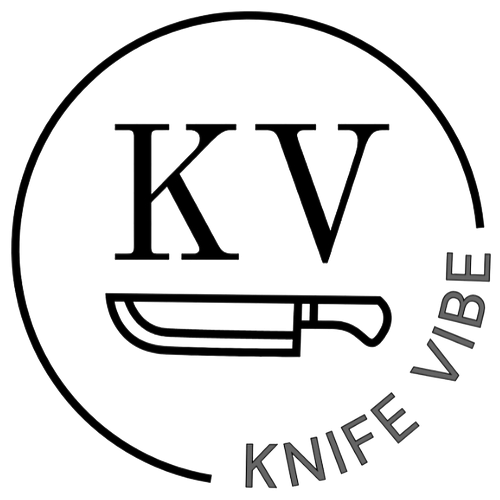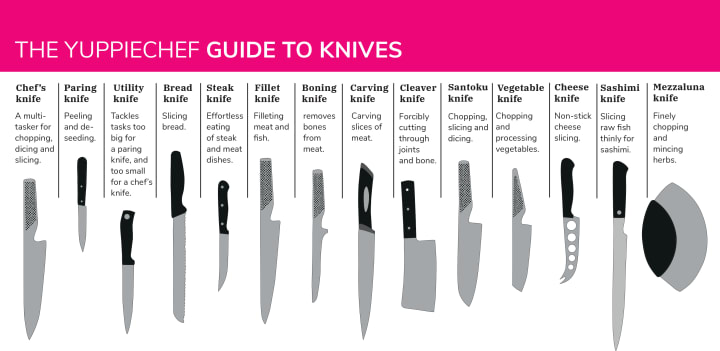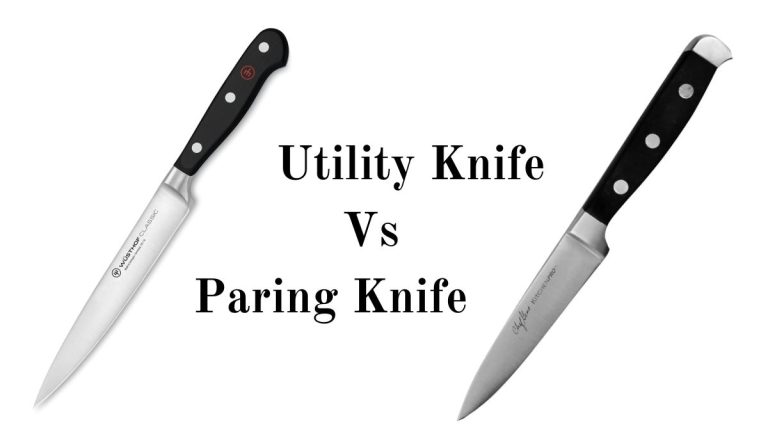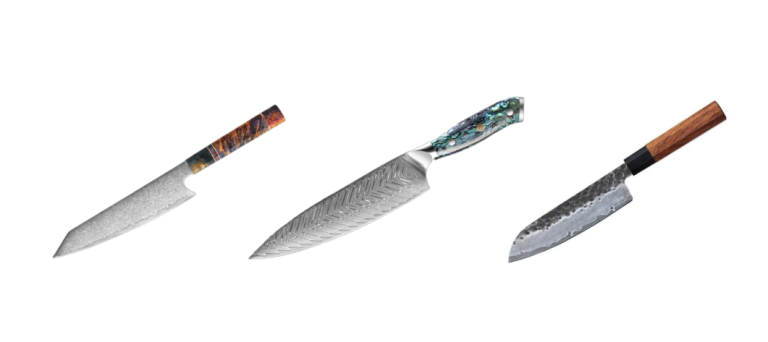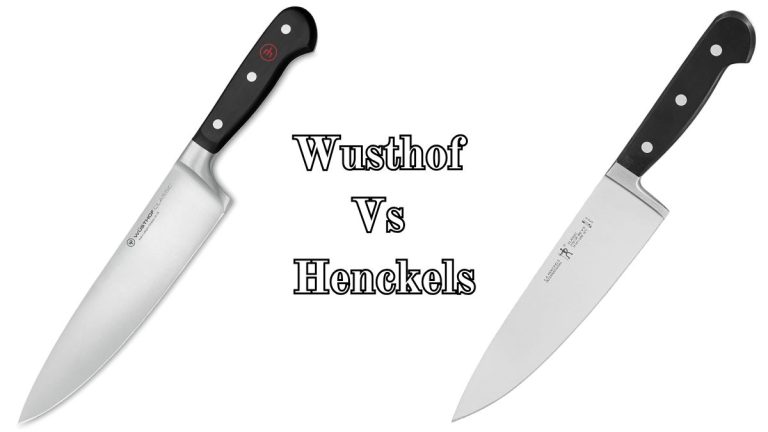Kamikoto Vs Shun Knives: The Ultimate Chef’s Choice Comparison
When it comes to premium kitchen knives, Kamikoto and Shun are two popular brands. Both offer high-quality blades, but which one is better for you?
Choosing the right knife can make a big difference in your cooking experience. Kamikoto and Shun knives have unique features and benefits. This comparison helps you understand what each brand offers. We will explore their key differences, materials, and performance.
Knowing these details will help you make an informed choice. Whether you’re a professional chef or a home cook, finding the right knife is important. So, let’s dive into the world of Kamikoto and Shun knives and see which one suits your needs best.
Introduction To Kamikoto And Shun Knives
Choosing the right knife for your kitchen is essential. Kamikoto and Shun are two popular brands known for their quality. Both have deep-rooted traditions and unique craftsmanship. But what sets them apart? Let’s dive into their history and philosophy.
Brand History
Kamikoto traces its origins to Japan’s Niigata Prefecture. This region is famous for its blade-making history. The company focuses on traditional methods. Their knives reflect centuries of expertise and precision.
Shun, on the other hand, is a brand under the KAI Group. Established in Seki City, Japan, this area is known as the heart of Japanese cutlery. With over a century of experience, Shun merges tradition with modern techniques.
Philosophy And Craftsmanship
Kamikoto emphasizes simplicity and durability. Each knife is hand-forged from high-quality steel. This ensures long-lasting sharpness and strength. The design is minimalist, focusing on functionality.
Shun’s philosophy centers on harmony and beauty. They blend traditional craftsmanship with innovative technology. Shun knives often feature Damascus steel. This not only adds strength but also creates a unique, wavy pattern on the blade.
Both Kamikoto and Shun take pride in their heritage. Their knives offer a blend of art and functionality, perfect for any kitchen.

Credit: prudentreviews.com
Materials And Construction
Choosing the right knife involves understanding its materials and construction. Both Kamikoto and Shun knives are known for their quality. Let’s compare their blade materials and handle construction to see how they stack up.
Blade Materials
Kamikoto knives use high-quality steel from Honshu, Japan. This steel is durable and holds a sharp edge. The blades undergo a rigorous process to ensure precision.
Shun knives use VG-MAX steel, a high-end Japanese steel. It includes extra carbon, cobalt, and tungsten for strength and sharpness. The blades are also layered with Damascus steel for a beautiful finish.
Handle Construction
Kamikoto knife handles are made of G-10 material. This composite resin is water-resistant and strong. The handles are designed for a comfortable grip and balance.
Shun handles are often made of pakkawood, a resin-impregnated hardwood. This material is durable and resistant to moisture. Shun also focuses on ergonomics to provide a comfortable and secure grip.
Design And Aesthetics
When comparing Kamikoto and Shun knives, the design and aesthetics play a crucial role. Both brands are renowned for their craftsmanship and attention to detail. This section delves into the intricacies of their blade design and handle design.
Blade Design
The blade design of Kamikoto knives exudes elegance and precision. Made from high-quality steel, each blade is meticulously crafted to ensure sharpness and durability. Kamikoto blades often feature a single-bevel edge, making them perfect for precise cuts.
Shun knives, on the other hand, offer a distinct blade design. They are made from high-carbon stainless steel, ensuring strength and resistance to corrosion. The blades often have a double-bevel edge, catering to both left and right-handed users. The intricate Damascus pattern on Shun blades adds a unique aesthetic appeal.
| Feature | Kamikoto | Shun |
|---|---|---|
| Material | High-quality steel | High-carbon stainless steel |
| Edge Type | Single-bevel | Double-bevel |
| Pattern | Simplistic | Damascus |
Handle Design
The handle design of Kamikoto knives emphasizes simplicity and functionality. Crafted from G-10 material, the handles are durable and provide a firm grip. The minimalist design ensures comfort during prolonged use.
Shun knife handles are known for their ergonomic design and aesthetic appeal. Made from PakkaWood, they offer a warm, natural feel. The D-shaped handle ensures a secure grip and reduces hand fatigue, catering to professional chefs and home cooks alike.
| Feature | Kamikoto | Shun |
|---|---|---|
| Material | G-10 | PakkaWood |
| Design | Minimalist | Ergonomic |
| Grip | Firm | Secure |
Both Kamikoto and Shun knives showcase a blend of tradition and modernity in their design. Each brand caters to different preferences, ensuring an optimal experience for every user.
Performance And Sharpness
When choosing between Kamikoto and Shun knives, performance and sharpness are key factors. Both brands offer high-quality knives, but how do they compare in cutting ability and edge retention?
Cutting Ability
Kamikoto knives are known for their precision. They offer smooth and clean cuts. The blades are hand-crafted using high-grade steel. This ensures a sharp edge that glides through food with ease.
Shun knives also excel in cutting ability. The VG-MAX steel core provides a razor-sharp edge. The layered Damascus cladding enhances both beauty and performance. Shun knives handle a variety of tasks, from slicing vegetables to carving meat.
Edge Retention
Edge retention is crucial for any knife. Kamikoto knives maintain their sharpness for a long time. They require less frequent sharpening. This makes them ideal for busy kitchens.
Shun knives also offer excellent edge retention. The VG-MAX steel is hard and durable. This means the knives stay sharp longer, even with regular use. Their layered construction adds to their longevity.
Ease Of Use And Maintenance
Choosing between Kamikoto and Shun knives involves considering ease of use and maintenance. Both brands have their strengths, but they differ in some aspects. Let’s explore how they compare in ergonomics, sharpening, and care.
Ergonomics
Kamikoto knives feature a traditional Japanese design. They often have straight handles. This design suits users who prefer a firm grip. The balance tends to be forward-heavy. This makes slicing more efficient.
Shun knives, on the other hand, offer more ergonomic handles. They have a contoured shape. This design provides a comfortable grip. The balance is more even. This reduces hand fatigue during long use.
Sharpening And Care
Kamikoto knives need regular sharpening. They are made from high-carbon steel. This keeps them sharp for longer. However, they can rust if not dried properly. It’s essential to hand wash and dry them immediately.
Shun knives use VG-MAX steel. This material resists rust and stains. They stay sharp longer with minimal sharpening. A honing rod can help maintain the edge. Hand washing and drying are also recommended for Shun knives.
Both Kamikoto and Shun offer excellent performance. Your choice depends on your preferences for ergonomics and maintenance.
Price And Value
When selecting a high-quality knife, the price and value are essential factors. Kamikoto and Shun knives are both popular choices, but how do they compare in terms of cost and long-term value? Let’s dive into the details.
Cost Comparison
The cost of Kamikoto knives typically ranges from $200 to $700. They are known for their sleek design and excellent craftsmanship. Shun knives, on the other hand, are priced between $100 and $600. They offer a wide range of options, from basic to premium models.
Here’s a quick comparison:
| Brand | Price Range |
|---|---|
| Kamikoto | $200 – $700 |
| Shun | $100 – $600 |
Both brands offer high-quality knives, but Kamikoto tends to be on the pricier side. This may be due to the materials used and the traditional craftsmanship involved.
Long-term Investment
Investing in a quality knife is essential for any kitchen. Both Kamikoto and Shun offer knives that are built to last. Kamikoto knives are made from high-quality steel, ensuring durability and sharpness over time. Shun knives use VG-MAX steel, known for its strength and edge retention.
Consider these factors for long-term value:
- Durability
- Edge retention
- Maintenance
Both brands require proper care to maintain their sharpness and longevity. Kamikoto knives often come with a lifetime guarantee, adding extra peace of mind. Shun also offers a limited lifetime warranty, covering any manufacturing defects.
In terms of long-term value, both Kamikoto and Shun deliver excellent performance and reliability. Your choice may depend on your budget and specific preferences.
Customer Reviews And Feedback
Choosing the right knife can be challenging. Kamikoto and Shun are both popular brands. Customer reviews and feedback can help make this decision easier. Here, we explore opinions from professionals and home chefs.
Professional Opinions
Professional chefs often favor Shun knives. They praise their sharpness and balance. Many chefs also appreciate the craftsmanship of Shun knives.
In contrast, Kamikoto knives receive high marks for their durability. Professionals also highlight their single-bevel edges. This feature makes them ideal for precise cuts.
Both brands have their strengths. Shun is known for sharpness and precision. Kamikoto stands out in durability and edge control.
Home Chef Experiences
Home chefs also have plenty to say. Many enjoy the ease of use with Shun knives. They find them lightweight and easy to handle.
On the other hand, Kamikoto knives are preferred for heavier tasks. Home chefs find them robust and reliable. They praise the long-lasting sharpness of these knives.
Here’s a quick comparison based on customer feedback:
| Criteria | Shun | Kamikoto |
|---|---|---|
| Sharpness | ⭐⭐⭐⭐⭐ | ⭐⭐⭐⭐ |
| Balance | ⭐⭐⭐⭐⭐ | ⭐⭐⭐⭐ |
| Durability | ⭐⭐⭐⭐ | ⭐⭐⭐⭐⭐ |
| Ease of Use | ⭐⭐⭐⭐⭐ | ⭐⭐⭐⭐ |
Both brands have their unique advantages. Shun is often preferred for its sharpness and ease of use. Kamikoto is favored for its durability and edge control.
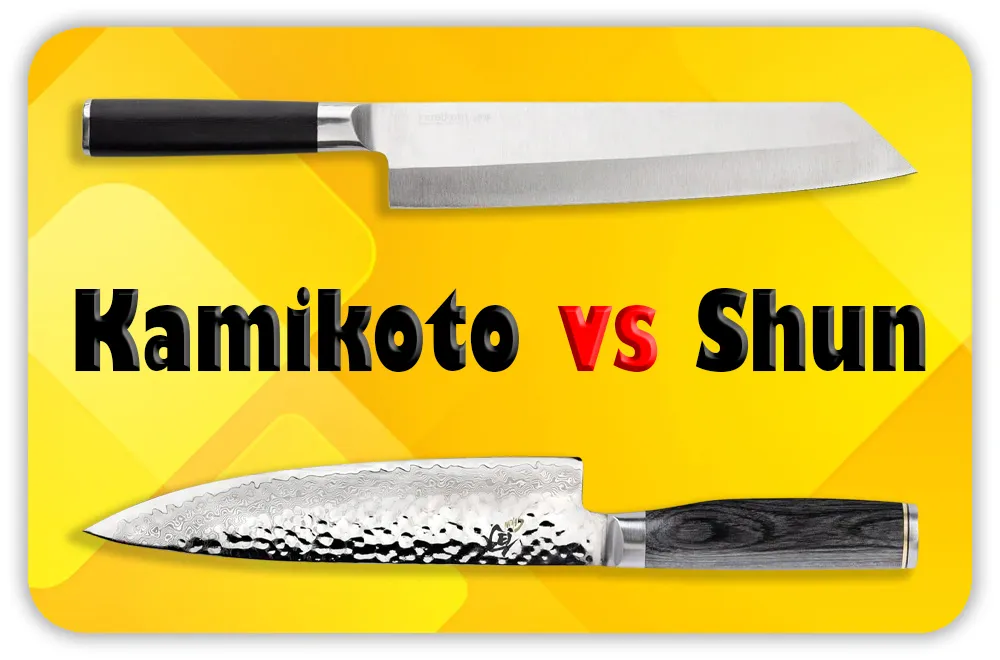
Credit: kitchprep.com
Frequently Asked Questions
What Are The Main Differences Between Kamikoto And Shun Knives?
Kamikoto knives are known for their single-bevel design, while Shun knives are double-beveled. Kamikoto uses high-quality steel from Honshu, Japan. Shun knives are crafted from VG-MAX steel, providing excellent edge retention. Both brands offer superior craftsmanship and performance.
Which Brand Offers Better Edge Retention?
Shun knives typically offer better edge retention due to their VG-MAX steel. Kamikoto knives, however, are also known for their sharpness. Both brands are durable, but Shun’s material composition gives it a slight edge in longevity.
Are Kamikoto Knives Worth The Investment?
Yes, Kamikoto knives are worth the investment for their quality and craftsmanship. They use high-grade Honshu steel, ensuring durability and sharpness. Ideal for precise cuts, they are a great addition to any kitchen.
How Do I Maintain Shun Knives?
To maintain Shun knives, hand wash them immediately after use with mild detergent. Avoid dishwashers, as they can damage the blade. Sharpen regularly using a whetstone or professional sharpening service to keep the edge pristine.
Conclusion
Choosing between Kamikoto and Shun knives depends on your needs. Kamikoto offers traditional, handcrafted knives. Shun provides modern, versatile options. Both brands deliver quality and sharpness. Kamikoto suits those valuing craftsmanship. Shun is ideal for varied cooking tasks. Consider your cooking style.
Think about your budget too. Either choice brings precision to your kitchen. Happy cooking!
